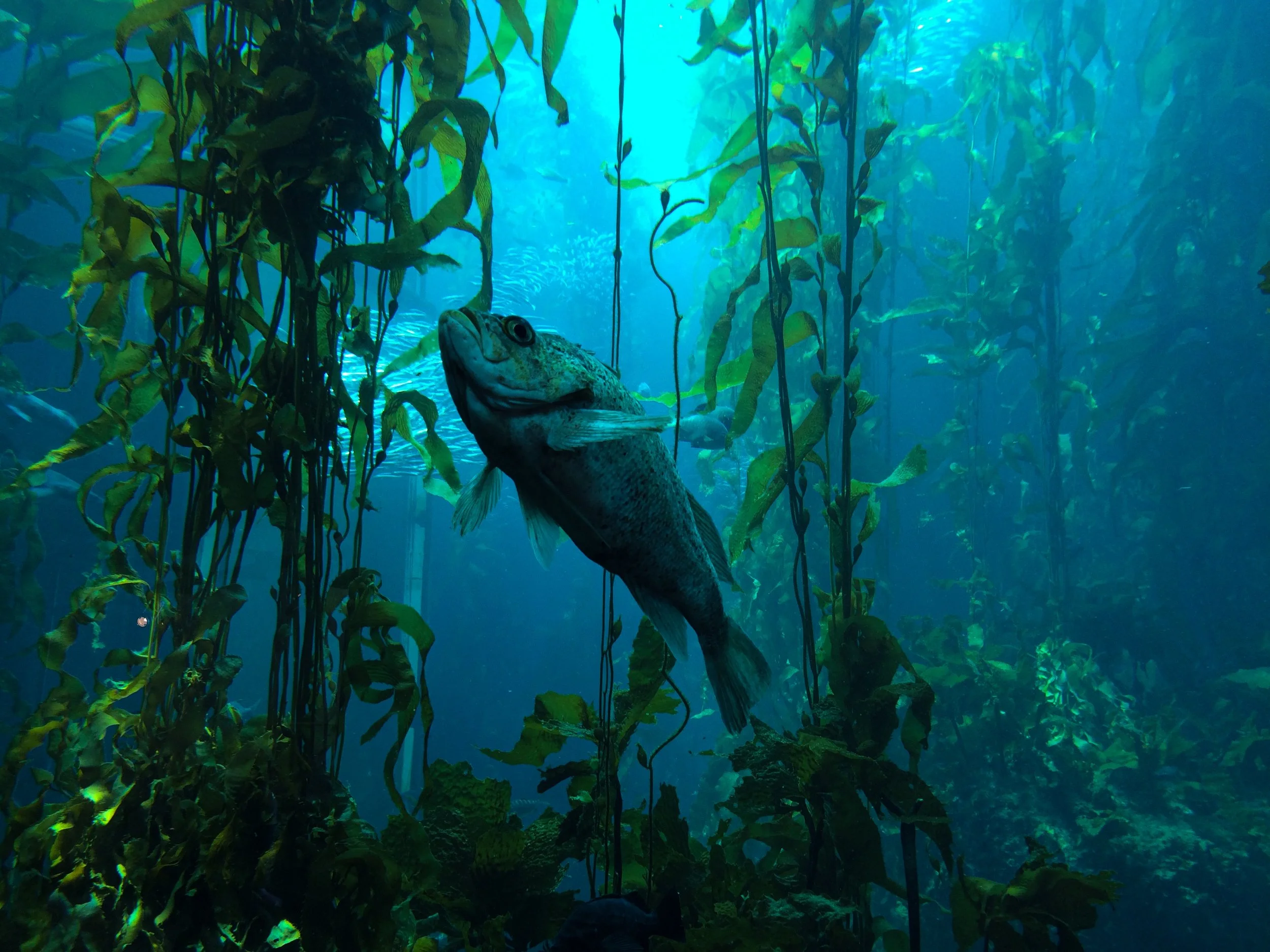
Frequently Asked Questions
-
We all want to give our children a safe climate, like we or our parents had.
Climate restoration means restoring a climate in which humanity has thrived over the long term— and doing it by 2050 while our ecosystems, climate systems, as well as social and political systems are sufficiently intact.
For a safe climate, we need safe CO2 levels. To reach those, we need to remove a trillion tons of CO2 from the atmosphere. -
The climate we enjoyed for 12,000 years—from the end of the last Ice Age until about 100 years ago—was stable and safe. This “pre-industrial “ climate allowed us to develop agriculture, cities, civilizations.
In technical terms, pre-industrial CO2 levels were about 275 parts per million (ppm). That means that out of a million molecules of dry air, 275 are CO2.
The highest CO2 level humans have experienced long term is 300 parts per million (ppm). Today they exceed 420 and are rising every year. -
In the historic Paris Accords of 2015, the world agreed to reach “net-zero emissions” by 2050.
Net zero involves reducing emissions by transitioning to clean energy as far as possible and then balancing out the remaining fossil-fuel emissions by removing an equal amount of atmospheric CO2.
Net-zero then means not pumping any more greenhouse gas pollution into the atmosphere. Transitioning to clean energy is good for the atmosphere as well as environmental and human health. The net-zero goal challenges us to move to clean, renewable energy with all haste.
However, reaching net-zero is not the same as restoring a safe climate. -
Most people assume that achieving net-zero emissions will end the climate crisis. But it won’t.
Net-zero means stabilizing CO2 levels where they are. While stabilizing CO2 was appropriate in the 1980’s before climate change was visible, it’s no longer enough.
Even if we magically achieved net-zero tomorrow, we would still have all the CO2 pumped into the atmosphere over the last 200 years. There’s a trillion tons of this “legacy” CO2. It’s the main engine behind the climate chaos.
If we stabilized greenhouse gasses today without removing the legacy CO2, we would likely see our climate and ecosystems continue to collapse before our eyes. Life as we know it would be in jeopardy.
To restore a safe climate, we need to move to clean energy AND to remove the trillion tons of legacy CO2 emitted into the atmosphere over the last two centuries.
-
Climate restoration is a new paradigm. Most climate action aims to “avoid the worst effects” of climate change through reducing emissions. In contrast, climate restorers aim to achieve the best—a safe climate for our children and future generations—by using clean energy AND restoring safe CO2 levels.
-
Because it’s been done before! Nature has lowered CO2 levels dramatically, many times, in the leadup to ice ages. In fact, she has removed as much CO2 from the atmosphere in the ice age cycle as we need to remove now. CDR can also occur very rapidly after volcanic eruptions.
About 30 years ago, scientists figured out how to replicate and accelerate these natural processes. Doing so is low-tech and remarkably low cost. After all, Nature performs this feat for free. -
By boosting photosynthesis in the ocean, which covers most of our planet. Leading up to an ice age, Nature increases dust storms which blow iron dust from drylands out to sea. Iron is necessary for all life but unlike other nutrients it doesn’t dissolve and linger at the surface—it sinks.
Restoring trace amounts of iron can prompt rapid growth of phytoplankton, the tiny green plants and algae that make up the base of the marine food web.
Phytoplankton absorb huge amounts of CO2 through photosynthesis. When the phytoplankton (and whatever eats it) dies, it drops to the depths. There, the biocarbon can’t rot or burn, unlike with plants on land. Depending on the depth, it stays sequestered for over 1,000 years.
We call this natural process “ocean iron fertilization” or OIF. It’s like giving an iron supplement to anemic parts of the ocean.Volcanoes, underwater vents, and whales also replenish iron in the upper ocean. Yes, whales! Many kinds eat in deep water, then poop huge amounts of iron out at the surface. Unfortunately, fewer than 10 percent of whales remain—one reason restoring iron is essential. In turn, increasing food sources can help restore whale populations.
In 1992, the world reached net zero emissions! Not because we stopped emitting…but because all 20 trillion tons of CO2 our civilization poured out was removed from the atmosphere. The most plausible cause: The eruption of Mt Pinatubo in 1991 would have released a lot of iron-containing ash into the nearby ocean, creating rapid, large-scale OIF.
-
By following Nature’s lead through a rigorous scientific process called “biomimicry.” Researchers and implementers are planning about a dozen pilot projects worldwide to replicate and accelerate the natural process of ocean fertilization.
From the science of ice ages and also of volcanoes, which remove CO2 very rapidly, we project that intentional OIF could scale up to 60 billion tons of CO2 a year. At that rate, we could restore safe CO2 levels by 2050.
Scientists and engineers are also emulating how Nature removes methane from the air. Less concentrated than CO2 and shorter lived in the atmosphere, methane is about 80 times more powerful than CO2. Through biomimicry, we plan to double the rate of natural methane oxidation, which will cut methane concentrations in half, restoring pre-industrial levels rapidly.
-
You may have heard a lot about regenerative agriculture, agroforestry or biochar. “Nature-based climate solutions” also include tree-planting, holistic grazing, “blue carbon,” and restoration of all sorts of ecosystems (“eco-restoration”).
Regenerative ag and eco-restoration are intrinsically valuable: they improve the health of soil, crops, wildlife, and humans. Some can earn funds in the offset market, particularly in countries in the South.
But by themselves they’re likely not scalable enough to restore the climate in the short timeframe we have. Many require widespread behavior change. For example, billions of farmers around the world would need to adopt new practices for regenerative agriculture to make significant progress toward restoring the climate.
Permanence of CO2 storage is also an issue: As vegetation dies, it rots, releasing carbon back to the air. And in a forest fire, the CO2 captured by trees all goes back to the atmosphere.
These efforts are tremendously important for life on Earth. They can contribute to restoring a safe climate. But they cannot substitute for highly scalable, ocean-based restoration.
-
In a word, No. Direct Air Capture (DAC) and other forms of industrial CDR are simply too expensive to scale and thus cannot reduce CO2 levels-- only offset some new emissions. Given decades, perhaps they could. But the situation is urgent.
High-tech CO2 removal is getting billions of dollars in funding now. But it costs about $600 -$1,000 to remove one ton of CO2.
That’s 10,000 times more than replicating natural processes that can get the job done. Biomimicry has the advantage of being tested and honed by Nature over millions of years.
-
In the 1980s, when the world started to be concerned about global warming and the UNFCCC and IPCC were being developed, CO2 levels were still safe for humanity. Climate change was not yet perceptible. It wouldn’t have made sense to call for restoring a safe climate…because it was safe.
In that context, the UN and the world agreed to “stabilize” greenhouse gasses (GHG) in 1992. Stabilizing means reducing emissions by moving to renewable energy and increasing energy efficiency. (The term became “net-zero emissions” in the Paris Accords of 2015.)
From the beginning of climate discussions, reducing emissions became the rallying cry of climate activists everywhere, and it has remained the main goal. Few climate leaders yet address the urgent need to expand the goal, to restore a safe climate.
-
The biggest challenge right now is that we have no national or global agreement that puts us on the path to restoring the climate for future generations.
Most climate authorities aren’t even discussing a safe climate. Most people don’t even realize it’s a possibility.
We are working to change that!


